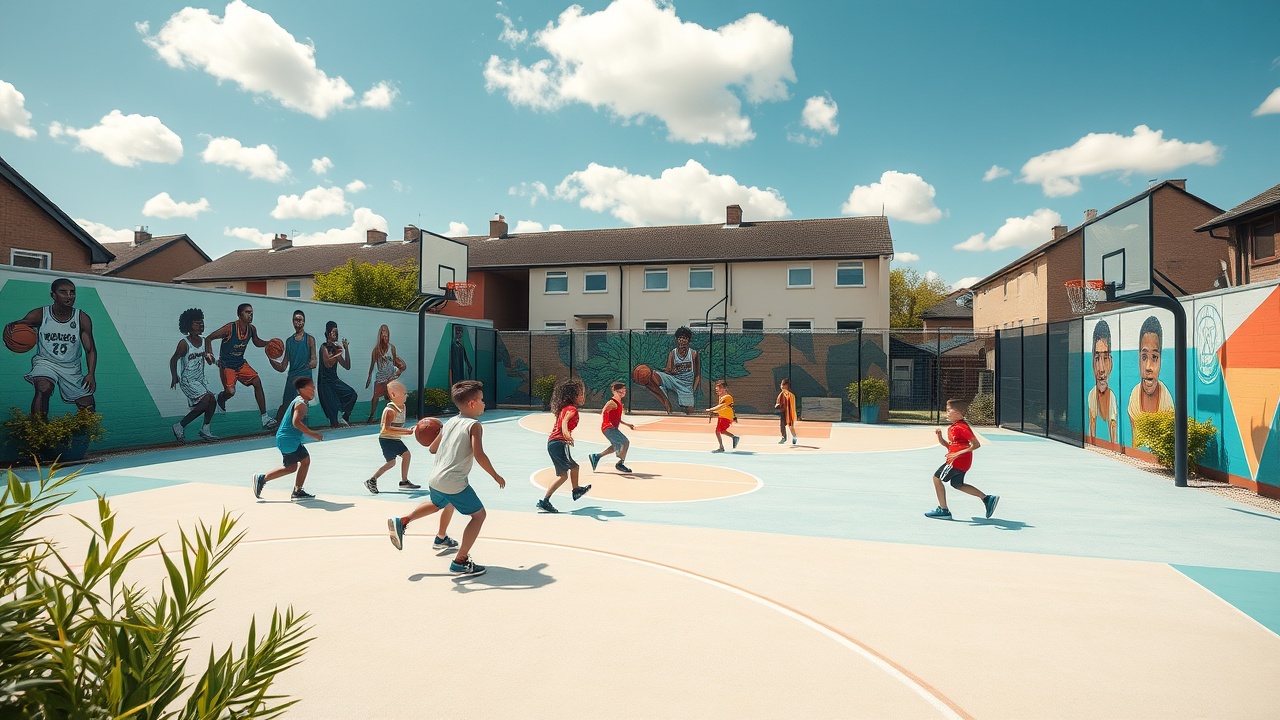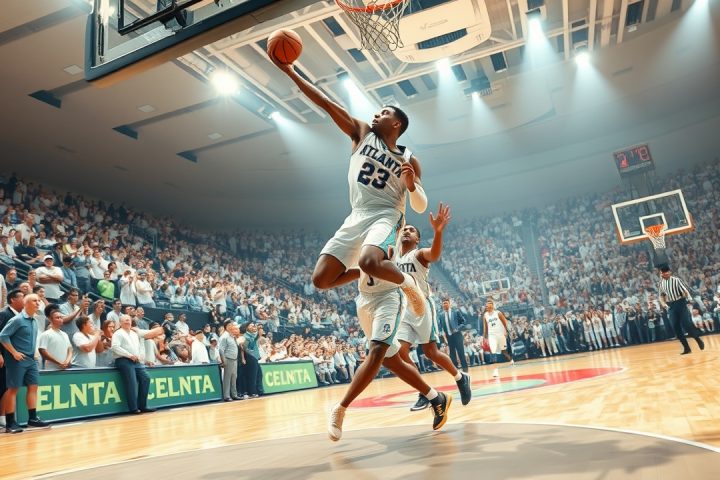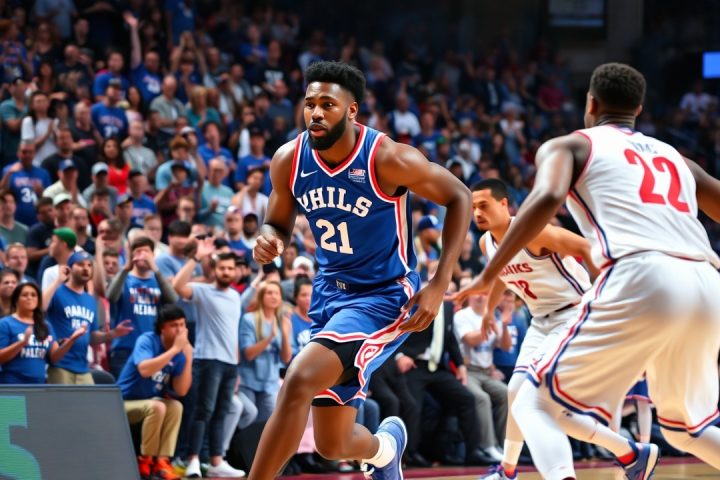Reviving Basketball in the UK
Basketball is often overshadowed by football in the United Kingdom, where the sport struggles to earn the same level of respect and recognition as it does elsewhere, particularly in North America. Yet, despite this, there are pockets of vibrant basketball culture brewing, thanks in part to initiatives led by passionate advocates like Sam Neter of Hoopsfix. Recently, Neter has focused on revamping basketball courts, aiming to invigorate the sport in a country that is often called a sleeping giant of European basketball.
Challenges and Opportunities
The challenge is evident in places like Butts End in Hemel Hempstead, which at first glance seems hardly suitable for competitive play—an unassuming concrete area that indicates the broader issues linked to basketball in the UK. Neter, who has actively sought to improve British basketball since launching Hoopsfix in 2009, believes the time for change is overdue.
“Basketball isn’t getting the attention it deserves in this country,” he said emphatically, urging that merely complaining won’t lead to progress.
One example of positive change is the recently refurbished basketball courts at Turnpike Lane in North London and in Brighton, dubbed “England’s Miami.” These installations, characterized by their eye-catching color schemes and improved facilities, not only attract local players but also foster community ownership and pride.
“I want each court to have its own identity, echoing the local culture,”
said Sam Sure, a designer who played a crucial role in the Turnpike Lane redesign, aiming for a retro aesthetic while ensuring the designs remained functional.
The Impact of Renovations
The Turnpike Lane project featured a vibrant palette and was celebrated with an unveiling that included various activities such as wheelchair basketball and 3-point contests on May 29. According to Sure, the process of renovating a court typically takes about 12 to 18 months and can cost around £50,000 to £100,000.
“These renovations breathe life into deprived areas, creating spaces where people feel connected and engaged,”
he remarked, underscoring the broader benefits to the community.
The Clapham Common court, completed in November 2021, stands as a landmark achievement for British basketball. With significant input from the NBA and sponsors like Foot Locker, Clapham features extensive seating and has garnered high praise from the basketball community, receiving a perfect score from court evaluators Denzel Kazembe and Behrad Bakhtiari.
Ongoing Challenges
Despite these successes, British basketball continues to face a myriad of obstacles, including a lack of funding and strong competition from other sports. Even as basketball ranks second to soccer in popularity, it often falls behind badminton and weightlifting in terms of national investment, especially with the upcoming 2028 Summer Olympics in Los Angeles on the horizon.
Looking Ahead
Neter’s efforts have not gone unnoticed, as enthusiasm grows for additional court refurbishments across London and beyond. The partnerships formed with organizations like Access Sport aim to bolster inclusion in community sports by renovating multiple courts in key locations. While the path ahead remains fraught with challenges—higher costs, ongoing volunteer shortages, and the migration of promising players to leagues in the United States—each newly designed court serves as a hopeful sign.
“It’s merely a step in the right direction; we’re committed to continuing this progress.”
Neter emphasized the importance of building momentum and there is a collective belief that, as these aesthetically pleasing and functional courts emerge, they will help nurture a thriving grassroots basketball culture in the U.K. and potentially catalyze a stronger national presence in the sport.




